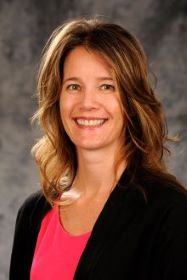Director's Letter

A key goal of the NIEHS Superfund Research Program (SRP) is to identify multifaceted solutions to environmental health issues. In 2022, SRP welcomed 11 new and returning multiproject centers , which seek to do just that - bring together teams of health and environmental science and engineering researchers to tackle complex problems related to hazardous substances.
SRP supports coordination and data management infrastructure to enhance the harmonization of diverse data from multiple research projects. By integrating different types of research from different disciplines and sharing knowledge within and across centers, multidisciplinary teams teams are better positioned to generate new discoveries.
In addition to biomedical and environmental science projects, each center also includes community engagement cores and research translation functions. Expanding community involvement and communicating research findings to multiple audiences, particularly those who are disproportionately affected by environmental contamination, is crucial to increasing the effectiveness of strategies to improve public health. SRP proactively disseminates its scientific accomplishments to its stakeholders - whether to the public through community outreach and engagement, to industry via technology transfer, or to government through partnerships.
As I mentioned, research translation is an essential component of SRP. This spring'sProgress in Research webinar series - which featured the new and renewed SRP centers - helped us facilitate a dialogue between researchers, field practitioners, and stakeholders early in the stages of research progress so that these new projects are on a trajectory for successful technology transfer and application by end users.
This Science Digest edition highlights the centers' fresh ideas and approaches to address environmental health issues related to emerging contaminants, climate-related disasters, environmental disparities, and more. Together, these centers work as part of a larger system to understand the myriad of connections between exposure to hazardous substances and health, as well as ways to reduce exposures to promote health and community resilience.
In case you missed it, the webinar archives are available on the Progress in Research webpage.
Warm regards,
Michelle Heacock, Ph.D.
Acting Director
Superfund Research Program
to Top



